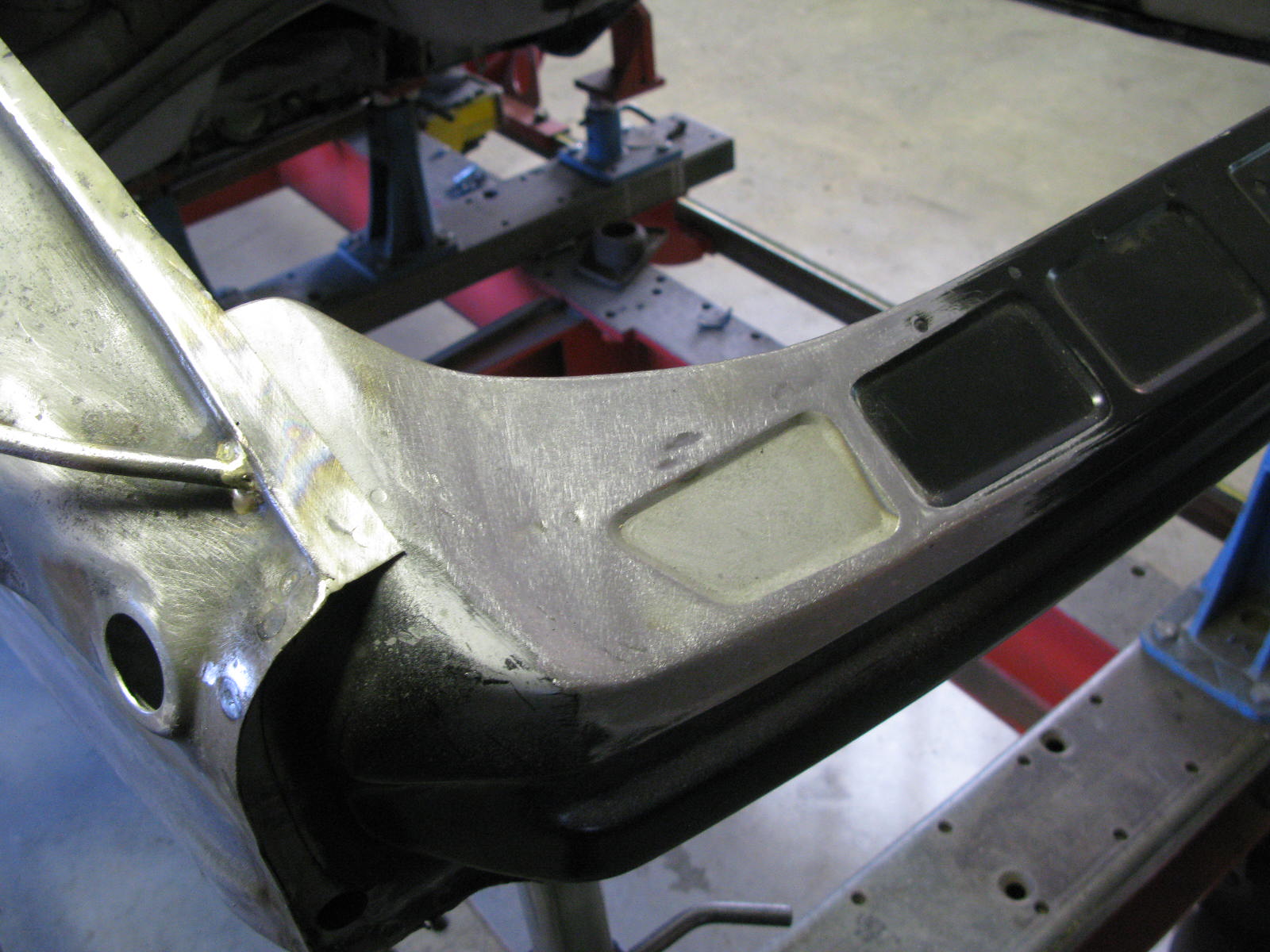After a bit of discussion we decided to keep most of the parcel shelf, but the LH end was in need of replacement. A Restoration Design panel was used as the basis for the repairs, but needed work.
Best to let Barry do the talking here, I think:
This area is quite the nastiest to work on. It can be seen quite easily, and yet access is a bit of a pain. It's covered by the huge seat-belt mounting, and also has the engine lid hinge mounting (that has to be referenced perfectly), plus the wiring and parcel-shelf tabs / bracket. It also under-laps the rear bulkhead.
Literally two days work here, and as an example, you can see how many spot welds you have to drill out to 'harvest' the hinge mount, seat-belt plate and parcel-shelf bracket.
In the end I made up a section of bulkhead, as I needed to cut it back a bit anyway, but that would have left me letting a small bit in, right next to the welded-speaker hole. It would have meant old and new welds everywhere, so better to make a slightly larger bit, and have it tidier. These early parcel-shelves are the worst to deal with because of those horrible little ribs. They are so hard to fabricate neatly, and in line right across a long repair. The ones on the new parcel-shelf are nothing like the original, so I had to re-work the few that are used here.
Goodbye parcel-shelf area, and frankly good riddance! On other hand, it does make that whole area of the car look so much healthier.


































































































































































































